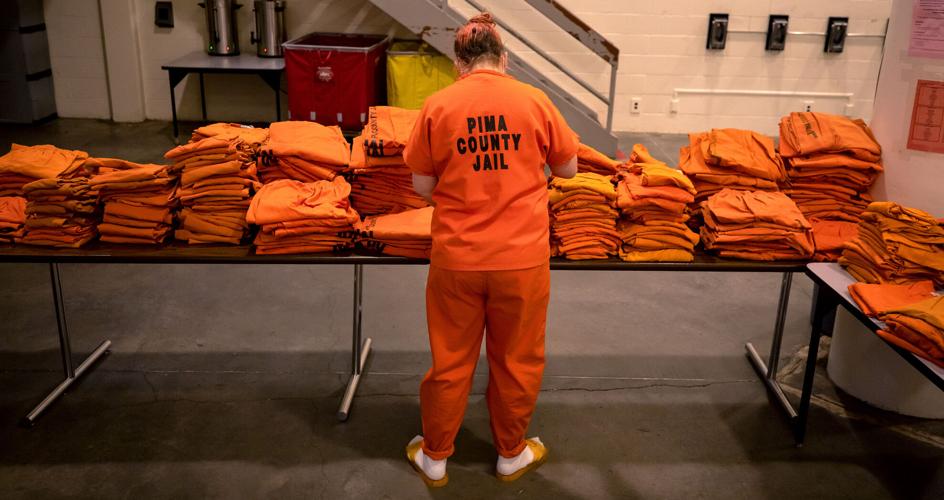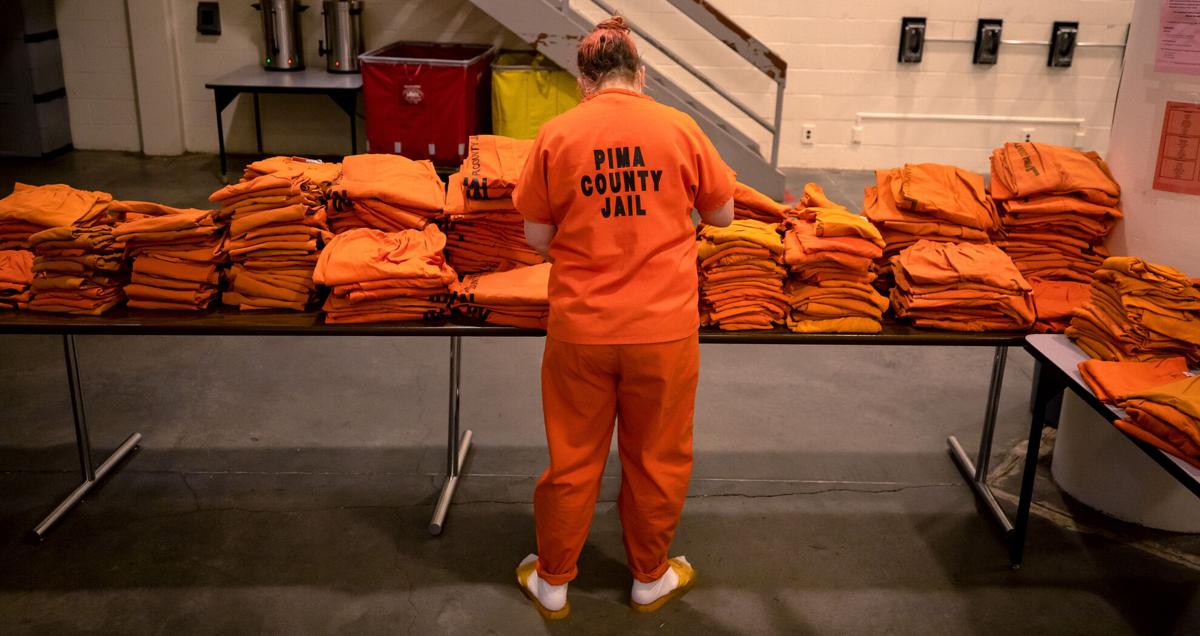In North Carolina, at least two large law enforcement agencies changed their procedures after data showed a disproportionate number of minorities were being stopped by police for things like broken headlights or expired registration.
In Allegheny County, Pennsylvania, data showed that having a public defender present at preliminary arraignments resulted in reduced jail bookings and decreased racial disparities.

Officials in Pima County now hope to produce similar insights by centralizing information from various criminal justice agencies in a justice data warehouse.
The warehouse will include a dashboard with information for the public and will integrate databases now siloed in each individual agency.
That will provide a real-time image of what's happening in Pima County's justice system. While the county's Justice Services Department is currently able to provide a snapshot of who is in the jail on any given day, it has no information about the decision making that led to that point.
"Does our jail population look this way because of arrests? Is it because of who is held or released at initial appearances? Is it because of case processing times or because we're waiting on beds for treatment?" said Kate Vesely, Justice Services director.
Also, many of the existing databases were developed years ago and don't include information that would assist in making decisions about safely reducing the jail population.
Reducing over-incarceration has been a goal for Pima County during its seven years of participating in a national initiative to rethink the way America uses jails, the MacArthur Foundation Safety and Justice Challenge.
The database will also help Pima County meet the future requirements of the Arizona Criminal Justice Commission, which has been tasked by the Legislature with creating a statewide justice database.
Other counties and states with similar data collection and analysis systems have seen positive results. Residents say they've been able to better navigate the system and agencies have enacted changes based on data.
Seeing beyond slice of the system
Pima County now has 10 criminal justice databases maintained by 10 different agencies, 12 methods of identifying individuals and nine methods of identifying cases. This means all agency data is separate and only shows a slice of the entire system, as no agency interacts with every single person who goes through the system, according to the warehouse proposal submitted by Justice Services.
The warehouse will be maintained by Justice Services, which is working with the county's Analytics and Data Governance Department.
The first step in the multi-phased project, which Vesely said will take several years to complete, is reclaiming the local data generated through participation in the MacArthur Foundation Safety and Justice Challenge.

Kate Vesely, Pima County Justice Services director.
"All of our various justice system partners have been submitting reports to the Institute of State and Local Governments, the ones who do all the jail comparison reports for the MacArthur sites around the country," Vesely said. "But there was never a central repository locally for the work."
"Ideally, (we will) create an internal dashboard that our justice system partners can say, 'Oh, I see this is what happens in my little sphere, but look at what happens when they jump to this intersect or that intersect,' " she said.
She pointed to the Tucson Police Department's public data dashboard as a marker to achieve.
"We use it all the time. Right now, we're looking at how the jail population has changed this year and we can compare that to calls for service by TPD," Vesely said. "The more we have access to those pools of data, we can make informed decisions. Are we really seeing an increase in arrests? Or are we actually seeing something else play out?"
Tracking treatment, support
Phase two will involve launching the highly-secure, integrated database, which Vesely called a long-term investment.
"We're only just now beginning to scratch the surface on what variables we need to be tracking to measure success" in justice outcomes, she said, listing, as an example, information about substance use by defendants.
"When we built these systems 10 or 20 years ago, it wouldn't have occurred to identify substance of choice. It wouldn't have occurred to know what their (defendants') social support looks like. As we get more advanced in the data we're able to track, I think it will become commonplace to look at what kind of needs this person has and not just be tracking justice outcomes but also be tracking treatment outcomes."
This would allow for measuring the success of treatment programs in various situations, which would help justice system partners make better informed decisions about which programs work best for which people and where to invest money. Treatment providers may also participate in data collection.
The system the county is discussing building works on aggregated data. It won't allow for tracking of an individual person through the system, but it will provide information about groups of people arrested during a certain time period and the outcomes in the cases, allowing for large-scale analysis, Vesely said.
"With increased access to data, not only can our justice system partners use it to make decisions that will reduce costs, improve outcomes associated with the justice system and most importantly support community safety, but it will eventually be a great resource for the community to have better insight into what happens in the justice system," she said. "To not only look at the data, but understand in context what that means. Your tax dollars are paying for it, you should know what your money is buying."
Public safety a key goal
Pima County's Pretrial Services Division, which assesses defendants' eligibility for release, has robust data available, Vesely said.
Data is analyzed "to make sure our programs are efficient," said Domingo Corona, director of pretrial services.
"We're looking at housing needs, substance use, behavioral health needs," he said. "It's not just only asking the questions, but are we asking the right questions and how do we capture that information so we can analyze it later?'"
It's important to know if programs are working effectively to ensure people get to court and the public is safe, Corona noted.
Data has shown that court date reminders are an effective tactic for pretrial systems. Pima County has a short-term grant to provide cell phones to detainees so they can stay in touch with pretrial services, treatment providers and whoever else they need to be successful while moving through the system.
"If someone doesn't have a phone, that system is useless," Corona said. "We've done some internal reviews and there are a lot of people without phones, especially people that don't have employment or don't have a place to live."
Pima County is also working with the Arizona Criminal Justice Commission, which is in the early stages of creating a statewide database.
The commission's executive director, Andrew LeFevre, credits the state Legislature for placing emphasis on diverting people from the criminal justice system in recent years and investing more in addressing substance use and mental health issues.
Lawmakers have also been looking for ways to provide additional resources to people re-entering society, LeFevre said.
With 150 law enforcement agencies in the state, 15 county attorney offices and dozens of municipal prosecutors and courts, the database process won't be quick. LeFevre estimated it will take upwards of three years and $5 million to create the database. But having all the state's criminal justice data in one place could cut down public record requests to individual agencies by up to 60%, he said.
The database will also track victim data to some degree, including use of victim compensation services, with LeFevre saying it's important to not forget that there's a cost to crime beyond the systems used to incarcerate someone.
"There's a cost to the victim, as well," he said. "What does the data say about who those crimes are being committed against?"
Get a roundup of solutions reporting from the Arizona Daily Star at linktr.ee/starsolutions. Video by Caitlin Schmidt / Arizona Daily Star.






